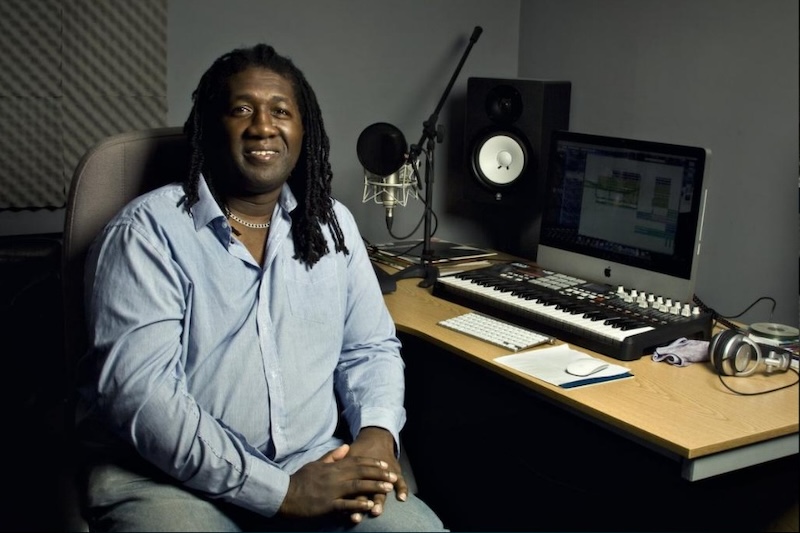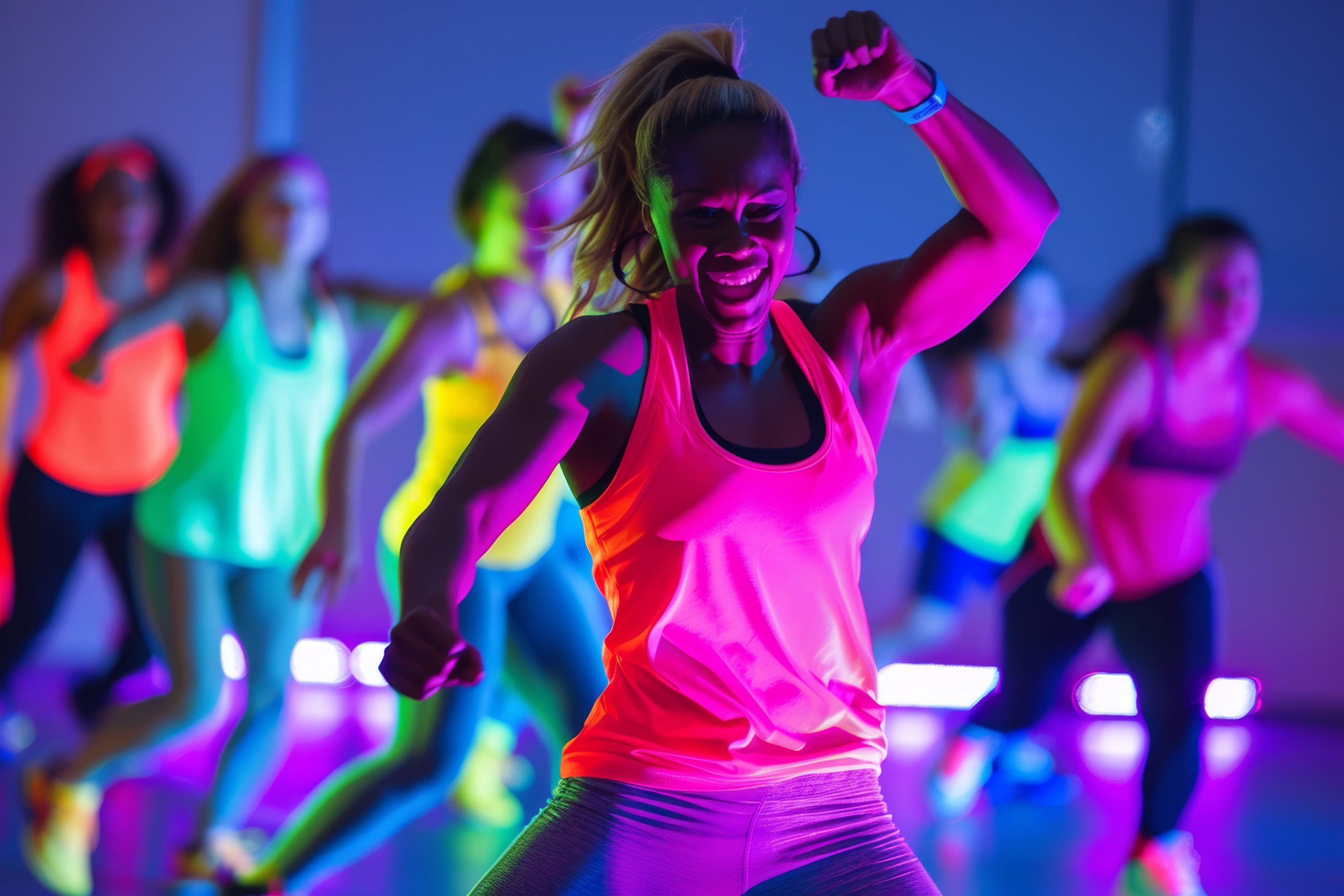FitPro’s resident DJ and musical maestro DJ ‘Nine Mile’ Decks, aka Dexter Jeffrey, talks all things BPM, so you can craft the most impactful group X classes using music as your magic ingredient.
FitPro: So, DJ Decks, how do I know what will work tempo wise in my session?
DJ Decks: The answer is to look at the natural speed of a particular song/track. So, for example, if a mixed title is set at 130BPM and, naturally, a song is around 122/124BPM, then speeding up several percent for that song would mean that song would be suitable. However, a song which is naturally 112BPM wouldn’t ideally be suitable as, even though you can speed it up to 130BPM (and with natural ‘key locking’ so the song doesn’t sound like ‘Pinky and Perky’ when you speed it up) the ‘feel’ of the song (due to such a vast speed change from the original speed) would and could in most cases make the song sound unfamiliar to the listening ear. I would avoid such a large jump in speeds like that – plus, legally, with our PPL mixing licence it would compromise it. Knowing what songs to use and not to use is greatly down to experience and having an ‘ear’ for music!
FitPro: Does speed really make a difference? Is faster better?
DJ Decks: As a DJ, it’s very rare I would leave the pitch controller at 0 for much of the night; instead, when playing dance music, I would DJ several percentage places higher, but again it all depends on the song. How this crosses over into the fitness industry (for which I create titles) is that I find speeding tracks up gives the track more energy and helps with motivation. So, in general, ‘faster IS better’ as a rule, but there are some tracks which actually sound better a tad slower than they naturally are set at. Those could be dance mixes of R&B songs, where slowing them down actually could be fine as well as leaving them at their natural up-tempo dance mix tempo. Again, choosing and knowing the right ones to use goes down to experience and having that ear for music!
FitPro: Is it better to use steady-state music or mixes that increase in speed?
DJ Decks: For the clubs I DJ at, songs where the tempo increases or decreases within the song can create a great atmosphere as you build your set to the ‘drops’ (when the steady beat comes back in and returns after the speed change). However, when creating fitness titles this is a no no, unless you are creating titles where it starts at one BPM and ends at another. So, throughout the mix, you gradually speed songs up or down to arrive at the destination BPM from its original start point over, say, a 15-song/track mixed album.
As a sound engineer and music producer, naturalising a song to use on a mixed fitness album where it speeds up and/or slows down within the song is a nightmare to correct for the fitness industry. There are ‘music production tricks’ that can be done to correct this for the fitness industry should the track be very popular and a ‘must’ to be used on a fitness compilation album! The tricks are too technical to get into here, as to do that accurately it involves breaking tracks down completely with sequencers.
FitPro: How do you as a DJ think the tempo affects mood? Or do other things come into play when it comes to affecting mood?
DJ Decks: I feel what affects mood are both tempo and rhythmical style. Let me give you an example: if I were to say to you three songs like Valerie by Amy Winehouse, Tainted Love by Soft Cell and Use It Up Wear It Out by Odyssey, you will automatically in your head hear these songs, right? You might be tricked into thinking the Odyssey song or the Amy Winehouse song are the fastest but they naturally aren’t. The Amy Winehouse song is the slowest song BPM wise, and the Soft Cell song actually has the higher BPM by quite some way making it the fastest, but due to the rhythmical feel of the Odyssey and Amy Winehouse songs, they give the impression that those songs are naturally the fastest. So, again, it’s not just the tempo that affects the mood but the rhythmical style too. I hope that makes sense!
FitPro: Pulling a mix together can’t be easy. What do you look for first?
DJ Decks: Every person is different I guess, so my way isn’t gospel so to speak, but I listen to a song and try to imagine a HUGE hall completely full of class participants. I try to imagine a song really motivating the whole room where I can see (in my head) everyone getting right into the class instead of just going through exercise motions. I would only use songs where I can imagine that it would show on their faces and in their movements that they are enjoying the music. So I think about that first before the technical things like choosing a particular song or setting a definite BPM that I think the song could rise/fall and be set to. Again, I can’t stress enough that this is down to years of DJing and musical experience in judging crowd reactions and knowing what does and doesn’t work.
FitPro: With so many tracks to choose from, how do you make the mix work best?
DJ Decks: You are right, there are indeed thousands of songs to choose from, but being a DJ currently on the circuit – and I have been now for over 30 years, DJing at Infernos in Clapham for over two decades now and at one of London’s largest night clubs each weekend, where I play a broad ‘open format’ set of music – I get to see which songs from the 70s to modern day really get a reaction. This includes new mixes of songs from record labels and promotional houses too, which I feel gives the MyGroupFit (MGF) titles that cutting edge when it comes to our brilliant fitness music albums when these mixes are available to be used on our titles.
FitPro: Is there any guidance for what speed is safe for certain activities?
DJ Decks: From my experience when I was doing my RSA exercise to music qualification (yeah, it’s been a long time since I was studying back then!), with high-impact music where two feet leave the floor, then a speed of around 138-150BPM is ideal for that (check out MGF’s new fantastic Club Bangers Volume 3 [Hi-Lo], as that title I put together with this in mind from start to finish and it reaches a 150BPM crescendo). Low-impact and step music, where one foot is always on the floor, should be around the 126-135BPM range and the new mind-blowing Club Bangers Volume 4 set at 132BPM is perfect for this type of class.
FitPro: What is pitch control on a stereo? Not all studios have it but should I change the speed myself with a pitch control button?
DJ Decks: Pitch control is a section of a medium or music player platform that allows the tempo of an audio song to either be increased or decreased manually by the user. Ideally for the fitness industry these devices enable you the instructor/fitness professional to do this, adding more scope and options to what classes you can provide. You could, in practice, turn a hi-lo set of songs into a low-impact set of songs and vice versa by adjusting the speed of the songs manually.
Ideally, each MGF title is tailored with the tracks set at their best optimum speed (so if it’s naturally slower but sped up for the title, the new BPM is ideally the fastest speed we believe it should be set at for release), but with access to a BPM control button/fader you would have direct control to alter that to tailor the speed for your classes should you feel, for example, you wanted to slow a step title down from 128BPM to a body conditioning tempo of, say, 120BPM. BPM/pitch control is something we DJs would always need when we DJ/play out live as we mix from song to song but, in the fitness industry and in studios, if you don’t have that feature with your equipment it’s not the end of the world, as here at MGF we have music for ALL classes, so please go to our website and browse our catalogue of music titles.

Dexter Jeffrey
Want to check out titles expertly spun by DJ Decks? Head on over to MyGroupFit
You can also check out DJ Decks’ other blog here.
DJ ‘Nine Mile’ Decks in the house: Making music for your fitness classes







